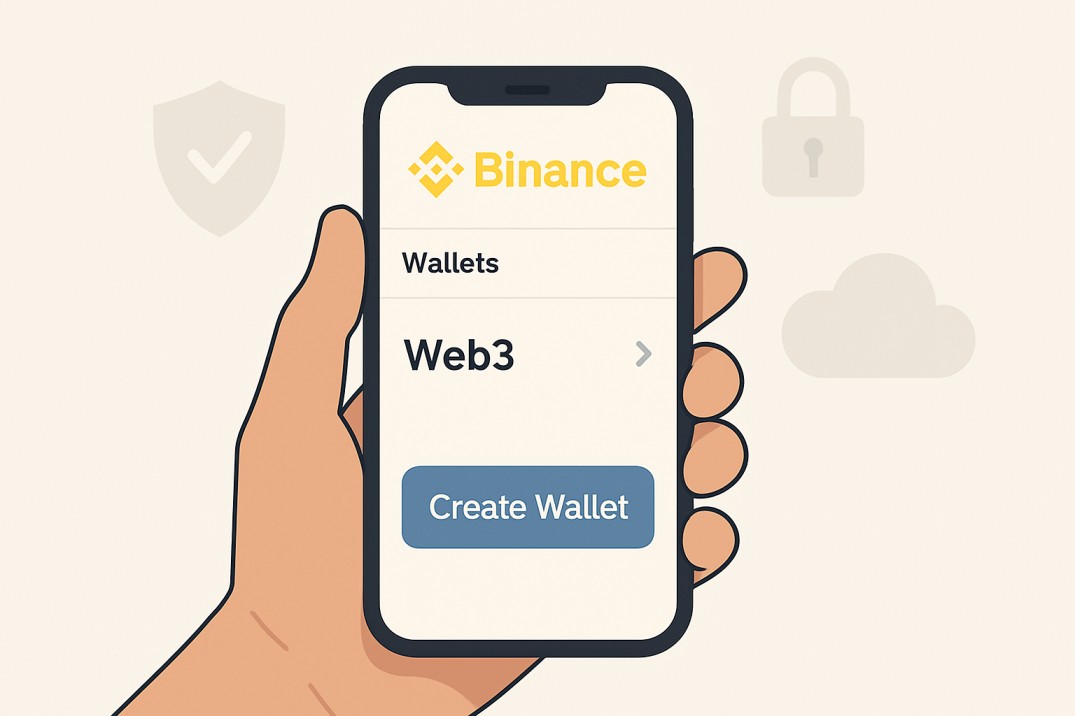Web3 wallets are rapidly evolving from simple crypto key-storage tools into dynamic digital identity platforms. The question “what is web3 wallet” now has a much broader answer than just “a place to store your coins.”
A Web3 wallet is a software or hardware application that stores private keys and allows users to send, receive, and manage cryptocurrencies and other blockchain-based assets.
First came offline cold storage. Then browser-based EOAs (Externally Owned Accounts) like MetaMask. Mobile EOAs followed, making crypto slightly more accessible. But the real leap is here: smart wallets and Multi-Party Computation (MPC) wallets are emerging as the new standard in 2025 and 2026.
Why Smart Wallets Change Everything

Smart wallets are not just storage devices. They are programmable accounts with built-in logic. Thanks to account abstraction, anyone can batch transactions, sponsor gas for others, and authorize session keys that auto-approve actions without additional pop-ups.
The UX improvements are significant. WebAuthn enables passkey logins using biometrics instead of passwords or seed phrases. Email and SMS-based social recovery remove the fear of losing access forever. You can also set up guardians to help recover your wallet without exposing sensitive data.
So what is a Web3 wallet today? It is a simple way to take control of your web3 assets, finance and online interaction. As seamless as Apple Pay, yet non-custodial. You keep control, but gain convenience.
Popular Web3 Wallets to Try Out in 2025
There are many Web3 wallets available today, each with its own features and functionalities. Here are some of the most popular Web3 wallets:
1. Non-Custodial Wallets (User holds the keys)
These wallets give you full control of your private keys and assets.
- MetaMask
Metamask is a browser and mobile wallet for Ethereum and other EVM chains like Polygon and Optimism. Ideal for DeFi, NFTs, and dApps. - Phantom
A wallet originally for Solana, now supports Ethereum and Polygon. Simple interface for swapping tokens, storing NFTs, and using dApps. - Trust Wallet
Mobile-first, supports a wide range of blockchains and tokens. Built-in dApp browser for on-the-go Web3 access. - MyEtherWallet (MEW)
MyEtherWallet Longstanding EVM wallet focused on Ethereum. Allows token swaps, staking, and offline use. - Coinbase Wallet
Separate from the Coinbase exchange. Non-custodial wallet with multi-chain support including Ethereum, Polygon, and Solana. - Torus
Login with Google or other social accounts. Torus uses distributed key management for a smooth onboarding experience. Supports EVM-compatible chains.
2. Custodial Platforms (Exchange-linked)
Your keys are managed by the company. Easier to use but less secure in terms of ownership.
- Coinbase (Exchange)
Centralized exchange with wallet functionality. Good for beginners, but custodial meaning you don’t hold the keys. - Binance (Exchange)
Global exchange with custodial wallet options and access to trading, staking, and other services.
3. Smart Contract Wallets (Next-gen wallets with automation)
These use smart contracts for advanced control like multisig, social recovery, and gasless transactions.
- Safe (formerly Gnosis Safe)
Safe is ideal for teams, DAOs, and treasury management. Multisig functionality with customizable rules. - Argent
Smart wallet for Ethereum with features like no seed phrase, social recovery (guardians), and easy DeFi access. - Ambire Wallet (not on your list)
A user-friendly smart wallet with account abstraction features like batch transactions and email login.
4. Multi-Chain and Multi-Feature Wallets
Support several chains and offer access to swaps, NFTs, and dApps.
- Bitget Wallet
Bitget has a web3 wallet with multi-chain support with built-in features like Swap, NFT marketplace, and launchpad access. - Zerion
Portfolio and wallet in one. Connects to multiple DeFi protocols and supports NFTs.
5. Multisig & Team Wallets
Built for shared access and control, especially for DAOs or businesses.
- Squads
Solana-native multisig wallet. Great for managing treasury and governance collaboratively on Solana. - Safe (again)
Supports multiple EVM chains and is a go-to for secure, multisignature setups.
Real-World Use Cases of Web3 Wallets You Have Never Read About
Smart wallets are not just for holding tokens. They also hold other benefits than the usual storage of crypto assets, and NFTs for users. Some of these include:
Gaming: Some smart wallets auto-approve micro-transactions for in-game assets. This way, gamers do not have to sign every move, making gameplay fluid.

Enterprise: Companies are using wallet-based Single Sign-On (SSO) for employee dashboards. In rare cases, each staff member’s wallet doubles as a secure login key.
Identity: With on-chain credentials and zero-knowledge proofs, some organizations can prove age or qualifications without revealing sensitive details.
Creator Economy: Musicians and creators receive streaming royalties directly into smart wallets, automating payouts with ease.
See also: Top 3 Web3 Wallet Development Company in 2024
Security in Practice
Many users worry about security, and rightly so. But modern wallets are solving this with smarter design and better defaults. Here are a few measures to keep yourself safe while making use of web3 technologies in your everyday life:
- Recognize the threats: Wallet-draining contracts and misleading pop-ups can trick users into signing malicious transactions.
- Session keys and limits: By setting session keys with time-bound permissions and transaction caps, you reduce the chance of large losses even if a key is compromised.
- Smart recovery: Instead of writing down a phrase and hoping for the best, set up a layered recovery with social guardians and optional backup services.
First-24-Hours Security Setup Checklist
- Enable biometric login
- Add two recovery contacts
- Set session key rules
- Review permissions for your favorite dApps
- Bookmark official wallet websites to avoid phishing
This proactive method will help you improves the security of your assets without sacrificing usability. It is part of what makes a Web3 wallet more than just a storage app.
Final Words
By 2026, the old debate of “wallet versus account” will seem outdated. Wallets will become the new browser. They will manage access, identity, and interaction in web3, just as Chrome and Safari do for Web2.
So what is a Web3 wallet? It is a tool for you to store crypto assets, NFTs, get access to web3 gaming platforms, and defi platforms. Experiment early, stay secure, and be prepared for a future where wallets serve more than just storage platforms.
Discover more from Dipprofit
Subscribe to get the latest posts sent to your email.



